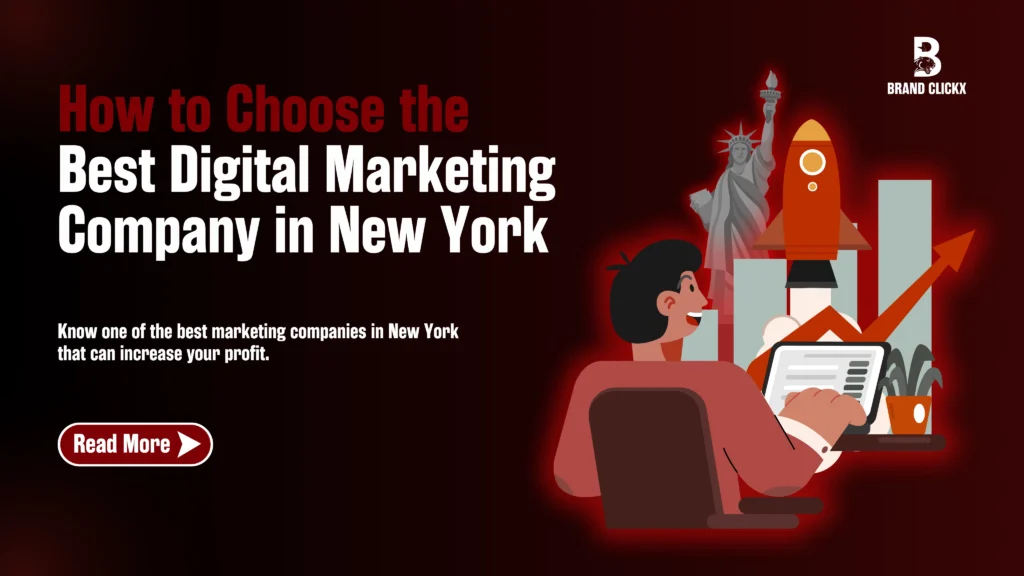Introduction: Why Website Redesigns Matter in 2025
If you’re running a business in 2025, your website is often the first impression you make. But if it looks outdated, loads slowly, or doesn’t reflect your current goals, it might be doing more harm than good.
Redesigning a website isn’t just a fresh coat of paint. It’s about rethinking the user experience, aligning your brand with your audience, and setting the foundation for future growth. And it needs to be done with care—rushing it could lead to lost SEO rankings, broken links, or customer confusion.
In this guide, we’ll walk through a step-by-step website redesign checklist designed to help businesses relaunch with clarity and confidence. From setting goals and auditing content to managing SEO and choosing the right CMS, every phase is covered.
Let’s explore how to do a website redesign the right way—no guesswork, just strategy.
Why Redesign Your Website? Key Signs It’s Time
Not every business needs a redesign every year. But there are signs that it’s time to consider one:
1.Your Design Feels Outdated
Trends change fast. A design that looked sleek five years ago may now feel clunky or amateurish. If your competitors’ websites look cleaner, more modern, or easier to use, you’re falling behind.
2.Your Website Doesn’t Support Your Goals
Has your business changed direction? Launched new services? Targeted new markets? If your site no longer reflects your mission or offerings, it’s time for an overhaul.
3.Mobile Experience Is Poor
Mobile-first design is non-negotiable in 2025. If your site isn’t responsive or mobile-friendly, you’re losing visitors and credibility.
4.Conversions Are Declining
If traffic is steady but conversions are dropping, your user journey may be broken. A redesign can help you improve CTAs, site flow, and lead capture.
5.You’ve Outgrown Your CMS
As your content and functionality needs grow, you may need a more powerful content management system to keep up.

Website Redesign Checklist: The Essentials
Before diving into wireframes and fonts, set a foundation for success with this website redesign checklist:
1.Define Your Goals
What do you want from the redesign? Common goals include:
- Improving lead generation
- Updating brand visuals
- Enhancing mobile usability
- Increasing organic traffic
Document these early so every decision ties back to them.
2.Audit Your Current Website
Use tools like Google Analytics and Hotjar to understand:
- Which pages perform best
- Where users drop off
- What devices visitors use
This data will guide what to keep, improve, or remove.
3.Set Your Budget and Timeline
A full redesign can take anywhere from 2 to 6 months, depending on complexity. Set expectations early with internal teams and external partners.
4.Identify Key Stakeholders
Who needs to approve content, sign off on design, or test the final version? Involve them from the beginning to avoid delays later.
5.Create a Project Plan
Break the project into phases:
- Strategy
- Content
- Design
- Development
- Testing
- Launch
Assign tasks and deadlines for accountability.
Conducting a Content Audit Before You Redesign
Redesigning isn’t just visual. Your content plays a huge role in SEO, branding, and user experience.
Why Content Audits Matter
You don’t want to redesign around weak content. A proper audit helps you:
- Identify outdated pages
- Spot gaps in messaging
- See what’s driving traffic
- Plan new content that supports goals
How to Audit Your Content
- Export your sitemap
- Use tools like Screaming Frog or SEMrush to evaluate content quality
- Look at bounce rates, time on page, and backlink performance
- Mark content as Keep, Update, Merge, or Remove
Update Content Strategically
Good content should be
- Targeted to the right audience
- Easy to scan (use headings, bullets, visuals)
- Aligned with user intent
- Optimized with relevant keywords
If you’re planning a shift in tone or branding, update content accordingly to stay consistent sitewide.

SEO Considerations During a Website Redesign
Ignoring SEO during a redesign can undo years of hard work. Preserve your search rankings with these best practices:
1.Crawl and Backup Your Current Site
Use a crawler tool to export all URLs, metadata, and content. This ensures nothing gets lost in the transition.
2.Maintain URL Structures (If Possible)
Changing URLs can cause ranking drops. If you must change them, implement proper 301 redirects from old URLs to new ones.
3.Optimize On-Page Elements
Check that title tags, meta descriptions, alt text, and H1s are optimized on the new site.
4.Submit a New Sitemap
Once live, submit the updated sitemap to Google Search Console to get the new pages indexed quickly.
5.Perform a Pre- and Post-Launch Audit
Test your staging site for broken links, missing tags, and duplicate content. Do another check after launch to catch anything missed.
Modern Design Trends That Improve User Experience
The look and feel of your site influences how users engage and whether they convert. Here are top design trends shaping websites in 2025:
1.Clean, Minimal Layouts
Cluttered pages overwhelm users. Focus on whitespace, bold headlines, and scannable sections.
2.Mobile-First Design
Google indexes mobile-first. Your site must be fully responsive, fast-loading, and easy to navigate on phones.
3.Micro-Interactions
Small animations—like hover effects or loading bars—make sites feel more dynamic and engaging.
4.Accessibility Built In
Follow WCAG guidelines to ensure your site is usable for everyone, including those with disabilities.
5.Brand Consistency
Use a defined color palette, typography, and tone across every page to strengthen your visual identity.
Design is more than aesthetics. It’s how your brand communicates trust and usability.
Choosing the Right CMS: What You Need to Know
Your content management system determines how easily you can maintain your site. Choosing the right CMS is critical.
Popular CMS Options
- WordPress – Flexible, scalable, plugin-rich
- Webflow – Design-focused, no-code friendly
- Custom CMS – Tailored functionality, higher cost and complexity
- Shopify – E-commerce focused
- Headless CMS – Ideal for sites with content distributed across apps or platforms
How to Choose
Ask these questions:
- Who will manage the site after launch?
- Do you need e-commerce or integrations?
- What are your future content needs?
- Do you want visual editing or developer support?
At BrandclickX, we help businesses assess the right CMS based on their goals, user roles, and growth plans.
Planning a Smooth Website Migration Strategy
A poorly planned migration can break links, lose data, or crash your site. Here’s how to avoid that.
1.Backup Everything
Full database and file backups are essential before making changes.
2.Use a Staging Environment
Test your new site in a secure staging area before going live. This lets you catch issues without affecting users.
3.Map Old to New URLs
Create a comprehensive redirect map to send users (and search engines) to the correct new locations.
4.Test Functionality
Check every form, CTA, and login. Test on all devices and browsers.
5.Monitor After Launch
Track traffic, rankings, and site health closely in the weeks following launch. Address issues immediately.
A successful migration is invisible to users—but critical to long-term success.
Post-Launch Optimization and Performance Tracking
Your website isn’t done when it goes live. Now comes the ongoing work to ensure it performs well.
Monitor Speed and Functionality
Use tools like GTmetrix or PageSpeed Insights to fix speed bottlenecks. Fix any bugs or broken links.
Track User Behavior
Install heatmaps and session recording tools to see how users interact. Are they clicking CTAs? Scrolling the whole page?
Analyze KPIs
Look at conversion rates, bounce rates, lead forms, and goal completions. Compare to your original KPIs.
Keep Content Fresh
Update your blog, case studies, and landing pages regularly. Evergreen content keeps SEO alive and builds authority.
Optimization is not a one-time task. The best-performing sites evolve constantly.
How BrandclickX Helps You Redesign the Right Way
At BrandclickX, we don’t just redesign websites we create strategic digital experiences that grow with your business. Whether you’re looking to refresh your design, switch CMS platforms, retain your SEO performance, or migrate to a new structure without headaches, our team is equipped to guide you through every stage.
Our services include:
- Full website redesign planning and execution
- SEO audits and implementation during redesigns
- Custom CMS consultation and setup
- Content audits and strategic copy updates
- Migration support with zero downtime
We’ve helped businesses transform underperforming websites into lead-generating machines. If you’re planning a website redesign, we’d love to support your journey.
Conclusion – Redesign with Purpose and Precision
A website redesign is more than just a visual update. It’s an opportunity to realign your brand, enhance the user experience, and drive real results.
By following this comprehensive website redesign checklist, you can avoid costly mistakes, retain your SEO value, and launch a site that supports your business goals in 2025 and beyond.
Plan strategically. Test thoroughly. Optimize continually. And when you need expert support, remember you don’t have to do it alone.
FAQS
1. What are the signs that my website needs a redesign?
Signs include an outdated design, poor mobile usability, slow speed, low conversion rates, or misalignment with your current brand goals.
2. How long does a typical website redesign take?
Depending on the scope, a full redesign can take anywhere from 6 to 16 weeks. Timelines are influenced by content volume, team size, and development needs.
3. What’s the risk of losing SEO during a redesign?
SEO can suffer if redirects are mishandled, content is removed without alternatives, or metadata is lost. Careful planning and auditing can prevent this.
4. Should I switch CMS platforms during a redesign?
Only if your current CMS limits growth or usability. A redesign is a good time to reassess your tools, but migration adds complexity that needs proper planning.
5. How do I ensure a smooth migration after a redesign?
Use a staging environment, backup your site, map old to new URLs, and monitor performance closely after launch. Testing is critical before going live.



